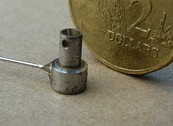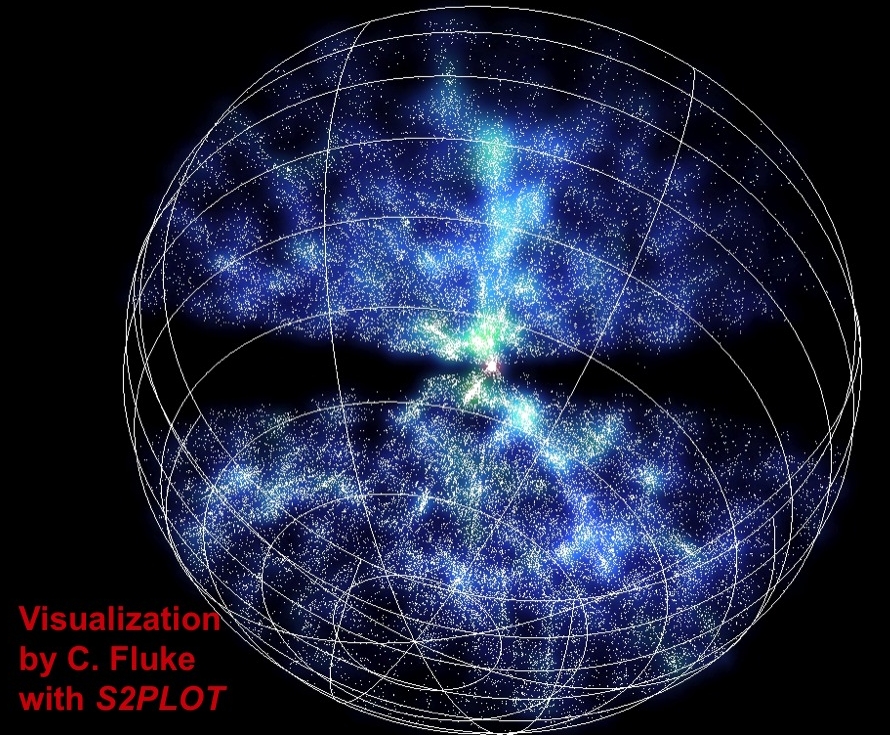
The 6dF Galaxy Survey story
In 2001 our international team of astronomers started an ambitious project to measure the distances to more than one hundred thousand galaxies - and in the process, map a sizable volume of our nearby universe. Measuring the masses and motions of the galaxies was also part of the plan: all the ingredients that shape the content of the universe in which we live. And so began the 6dF Galaxy Survey (6dFGS).

|
The
6dF name is a reference to the
Six-degree Field instrument,
a nifty device that uses optical fibres and robotic
positioning technology. It increases the observational power of the
Anglo-Australian Observatory's
UK Schmidt Telescope to more than 100 times its original capability. |
|
Over the next 6 years, we mapped nearly the entire southern sky (right). Observing over one hundred thousand galaxies was a massive task. |

|
The end result is a new appreciation for the way galaxies cluster and move in our local universe, and how they have come to be that way. Our data, maps, and results are now available to other researchers and the public.
Images and Movies

|
6dFGS: Beyond the Crux A galaxy fly-through movie by P. Bourke, P. Morse and G. Rogers for a planetarium show. [LOW RES] 6dFGS fly-through Another 6dFGS fly-through by P. Bourke. [LOW RES] 6dFGS: Southern Hemisphere Various views of 6dFGS by T. Jarrett. Large Scale Galaxy Structure A look at the large-scale galaxy structures in 6dFGS by the late A. Fairall. 6dFGS image gallery 6dFGS images by C. Fluke using S2PLOT. Interactive 3-d views of the 6dFGS redshift survey Interactive 3-d views of the 6dFGS peculiar velocity survey |